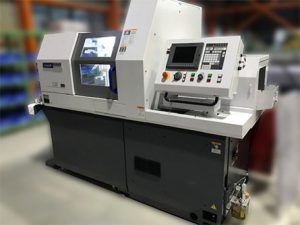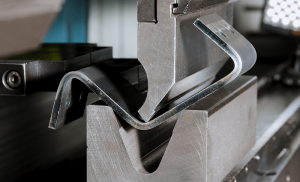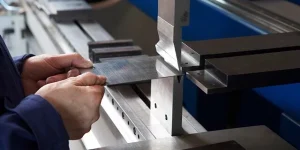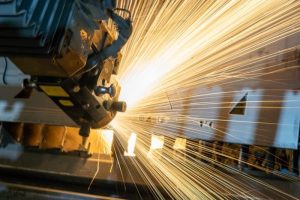CNC machining offers higher precision, faster production, consistent quality, reduced labor costs, complex designs, efficient material use, and lower maintenance
Higher Precision And Accuracy
A significant advantage of CNC machining compared to traditional machining is that the former are more precise. As this is an important trait for the products of CNC machining, this subsection will examine this matter in more detail. It will explain how the precision is defined and provide an example of how the above-mentioned benefit can be applied in a real-life situation.
Precision in CNC Machining
First and foremost, CNC machines are known for being very precise. In this case, precision can be defined as a product of the orderliness and accuracy with which a tool follows the given directions. In turn, the directions are set by the user who provides the desired measurements to the machine. Precise CNC machining is possible due to the utilization of accurate and efficient tools such as carbide or cobalt end mills, drills and reamers, in addition to a high level of operations. Haseeb states that CNC machines are roughly able to work with tolerances of ±0.001’’ or even smaller, which is much better than traditional machineries’ ±0.01″. This feature can be considered critical in the aerospace industry, for example, as deviation is unacceptable.
Repeatability and the Fact of Consistent Accuracy
A further advantage of CNC machining should be added to the aforementioned facts: it has consistent accuracy and thus repeatability. In other words, as soon as a program is developed, the machine can produce multitudes of the same product with very little difference between all of them. It is especially relevant in cases where a major order has to be filled. In the medical industry, where the practitioners rely on certain equipment, the manufacturer can now rest assured that the thousands of parts produced with the help of CNC machining will be identical and of top-quality.
Aerospace Industry: Reduced Fuel Consumption
It is a point of interest that CNC machining aids produce the most efficiently machined parts. Boeing is known to employ immense numbers of CNC machineries in the creation of their aircraft. The precision and the qualitatively performed work serve to ensure the aircraft’s safety and supreme usability. One example of successful work of Boeing’s CNC machining is that, due to the newfound production equipment, they have managed to reduce the mass of certain parts by 20%. Thus, the importance of precision in modern CNC machining should not be underestimated, and this feature, combined with the explained advantage of repeatability, is what sets it apart from traditional alternatives.
CNC machines are generally operated with the help of advanced CAD and CAM software, which further improve their precision and accuracy. These software tools provide the ability to create complex design and part geometries that would never be possible with traditional machining methods. For example, in the automotive industry, CNC machines integrated with advanced software can produce many intricate engine parts with unattainable precision, leading to an increase in performance and fuel efficiency. Case Study: Manufacture of Medical Devices
Producing precise and accurate parts is vital for the medical device manufacturing industry. Among other things produced in the industry, orthopedic implants can be considered premium examples. These implants need to have precise dimensions and smooth surfaces to be able to provide a perfect fit for the patient they are designed for. A study has found that CNC-machined implants have a success rate of 98% for operations, much higher than those of traditionally manufactured implants. Quality Control and Inspection
Numerous quality control and inspection methods can be applied with CNC machining. The actual machines are often equipped with sensors and other inspection tools, and every object produced is analyzed on a continuous basis and any deviations from the set dimensions are promptly corrected by the sensors. For example, in the electronics industry, CNC machines can be used to manufacture very precise circuit boards with microscopic accuracy, and an integrated quality control system always makes sure that every such board is functional.

Increased Production Speed
One of the most significant advantages of the CNC machining process depends on its ability to present a higher production speed compared to traditional machining methods. The following will detail precisely how the former method works in that regard and will offer various examples and data to emphasize these points.
Automation and Efficiency
CNC machines operate through mostly automated processes and exact programming. One of the essential points concerning those aspects is the lack of necessity for manual operations. People do not need to spend any time operating the machine, except for the initial instructions rolled out in the program. The machine can also switch between different tools automatically without manual interference. Thus, all the necessary processes that otherwise would need intervention happen by themselves, which allows speeding up the process.
Continuous Operation
Aside from that, one of the most significant advantages of CNC machining is its ability to run non-stop, or automatically, for a reasonably extended period. Traditional machining takes breaks periodically for alterations or maintenance. There is no need for that regarding CNC machines since those tools can work 24/7 with no need for stops. In practice, it means that CNC machines doubling or tripling work efficiency. For example, manufacturers could produce parts all day and night using CNC machines and sell or use them, increasing the production time by three.
Real-World Example: Automotive Industry
An example of a company taking full advantage of all the aspects of increased production speed provided by the CNC machining process is the General Motors company. The manufacturer cut the production time of particular engine parts by 50% and built thousands of engines while reducing lead times using CNC machines when running a small batch manufacturing plant. Although the company was not able to provide more exact details, the general example remains relevant.
Advanced Programming
Finally, CNC machines can use highly detailed and accurate computer software, such as CAD and CAM, to program operatio. CNC machines are typically highly efficient with tool paths, as shown by the fact that the production time of circuit boards in the electronics industry is cut down by 40% due to the accelerated pace provided by the programming.
Batch Production and Scalability
A notable benefit of CNC machining is that this technology is particularly well-suited for batch production. Once the program is set, the machine can be used for producing large quantities of identical parts rapidly and precisely.
A good example of this application is the aerospace sector where vast quantities of many various types of pieces must be prepared. For instance, Airbus uses CNC machines to order thousands of identical components rapidly produced in terms of the assembly of different aircraft machines. This switch between individual part production and mass assembly is made easy by the remarkable versatility and scalability of CNC machining.
Reduction of Setup Time
Traditional machining relies heavily on human labor and experience curves, so the setup may become a serious issue. CNC machines keep the time of setting the proper position and parameters of the machine to a minimum, once programmed initially.
Once the part is produced, the CNC machine composedly waits for a signal to immediately repeat the process and reproduce it. Thus, when the production of 100 identical parts is finished, a CNC machine operator may retain the program in the device, use it again when production is necessary.
In real-world examples, a part- or batch-produced cnc machine can be set up and started almost continuously, without as much adjustment for whole months at a time. For a medical device, for instance, after the completion of production, it can immediately start producing another part on a few CNC machines already available in the facility.
Case Study: Consumer Electronics
One of the best examples is CNC machining being used by Apple to produce new consumer electronic goods more quickly. For instance, while producing the iPhone, Apple managed to reach speeds at which thousands of units could be prepared per day. This is incredibly advantageous for the company as the high demand for such a novel product can be answered immediately with its mass production.
Enhanced Consistency And Quality
CNC machining is far more beneficial comparing to traditional one, especially with regard to the questions of consistency and quality. This paper will investigate how CNC machining provides greater consistency and quality, providing detailed examples and explanations to support the ideas.
Precision Engineering
CNC machines are highly precise tools. They are operated with the use of codes that are generated with their computer numerical control. This computer numerical control defines every movement that the machine makes. This control also guarantees that every machined part will be the same as the previously manufactured one. These technologies can hold a tolerance of ±0.001 to an inch that ensures that each and every part will meet exact specifications Above-mentioned qualities are underpinned by problems manual human machining. There are too great chances the piece could be off a tiny bit and that any of those pieces would still create variations.
The Real-World Example
The device that was first manufactured with the help of CNC machining was a pacemaker. Machining has changed greatly since that time and now even complex devices, such as X-ray machines, are manufactured with the help of these machines. However, I would like to emphasize that CNC machining is also highly important to the medical device industry. Thousands of people have their hip replaced. Worldwide each hip replaced has to be identical to avoid fractures or other complications that a patient may suffer in the future. Furthermore, developing identical products ensure that both parts of the replaced hip will fit perfectly with each other. Studies have shown that CNC-machined hip replacement components have a far greater success rate in surgeries. To illustrate, the success rate of CNC-machined hip replacement components was 97% in surgeries, whereas this index reached only 53% for pieces designed with traditional machining methods.
Automated Quality Control
Most CNC machines have in-process inspections and other type of measurement devices. Specifically, laser scanners and touch probes are commonly used in aerospace for measuring the parts while still on the production machine. These devices provide continuous measurements so that adjustments could be done on a real-time basis to maintain the quality of machining. Taking the idea further, this technology also allows re-writing the computer program after each part has been measured to engineer the system to machine only identical parts in the future.
In the automotive industry, the demand for high-quality, consistent parts is perhaps even more critical than in any other sector. Toyota, known for the company’s typically high manufacturing standards, employs the CNC machining technology to produce engine components. With high accuracy and precision, Toyota utilizes the CNC machining to ensure that each component of its engines is produced according to the company’s standards. Consequently the CNC technology has allowed Toyota to ensure the high quality and reliability of their engines, mitigating a significant source of risk for the consumer. Consequently, the focus on consistently high quality has allowed Toyota to establish a reputation based on the high durability and dependability of their vehicles.
Material Integrity and Surface Finish
Stress and imperfections are only one source of reduced quality and performance for a product. Dimension tolerance and surface finish are also crucial, and to a fault, depending on the precision of tooling. For example, aerospace components require high precision along the surface as much as where the casing is concerned in order not to fail via fatigue. In this instance, CNC machining provides a solution where it is not just the structural material integrity that is maintained but also the surface finish at the level of remote sensitivity.
Consistency in Complex Geometries
Another benefit of CNC machines for machine learning is the ease with which the machines cut to precision despite complex geometries used. In the electrical industry, CNC machines make housings for cellphones with complex interiors and surfaces.
Real-World Example: Aerospace Component Manufacturing
In aerospace manufacturing, the consistency and quality of components are of utmost importance for the safety and performance. For example, Airbus is using CNC machining for the manufacturing of numerous components vital for the safe operation of its aircraft. Turbine blades and airframe components are minimally defected components and maintain extremely high production standards. Additionally, the application of multiple metal types also requires very high consistency standards throughout the production process Marjanovic et al.. CNC machining allows the precision and reliability necessary to maintain these standards.
Enhanced Efficiency and Reduced Waste
The application of CNC machining also results in enhanced efficiency and reduced waste. CNC machining involves the accurate cutting of materials to the desired shape or form. This minimizes waste of materials and results in the ability to develop more environmentally friendly and cheaper production practices. For example, very high-precision plastic products such as molds for plastic injection molding benefit from a reduction of waste between 20-30% Lukina and Shegoleva. This reduction further involves lower costs of production, which contributes to sustainability.
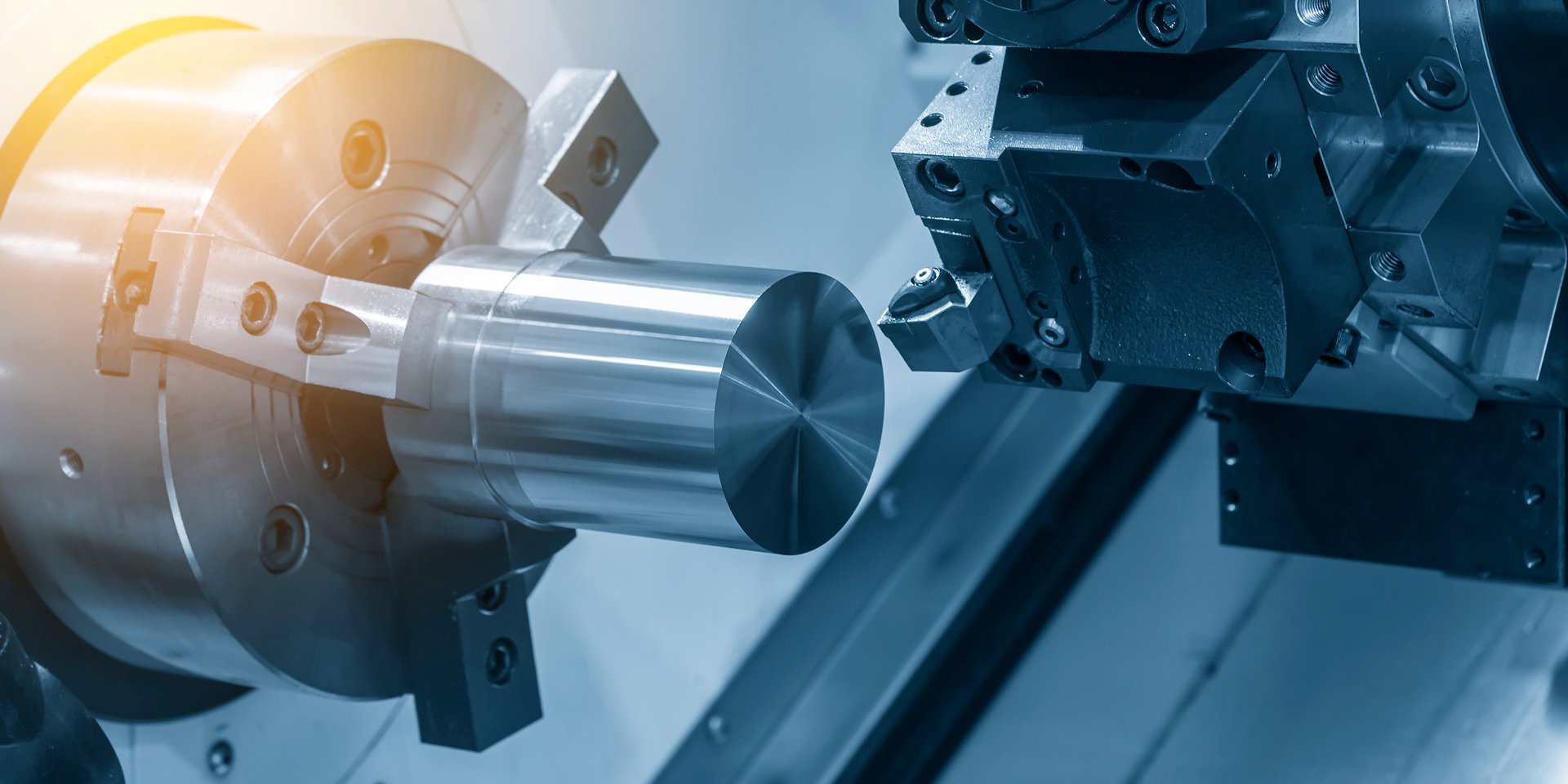
Reduced Labor Costs
The most compelling advantage of using CNC machining as opposed to traditional machining is the reduced labor costs, which this discussion will explore, by providing precise examples and explanations. One of the primary means of achieving low labor costs is the use of CNC, as mentioned earlier. I will explain this advantage of using CNC machines further, by describing the elimination of manual and laborious work that is replaced with automated machinery.
Automation and Reduced Manual Intervention
CNC machining combines a system of computers, which operate by instruction with automated related tools and machinery, such as drills, lathes, or mills, to manufacture various components. Campbell and Grimm provide examples of when using traditional machining for such operations, large numbers of workers had to work on a particular machine manually:
Employing a worker to operate one single machine required both the investment into worker’s periodical training and their wages and work conditions. In contrast to the above, the use of CNC machine requires only one worker that can supervise several CNC-driven machines at the same time. These machines will also not produce any erroneous parts, which is a common mistake when human operates traditional machinery.
Real-World Example: Manufacturing Industry
A piece of evidence of how the implementation of CNC machining reduced operation costs by cutting labor is the manufacturing industry. Reportedly, the use of CNC technology by manufacturers has reduced the labor costs by an outstanding 50 percent, which is a significant margin for large-scale production . Before using CNC machining, companies would have to work on different alloys, shapes, and forms manually, which accordingly would have to be done by tens of workers at the same time. Companies can hire one worker for programming and correcting the machinery so that all other work will be done by the CNC device using existing programs.
Case Study: Aerospace Component Production
In the aerospace industry, precision and efficiency are top priorities. Lockheed Martin has incorporated CNC machining into its production process for aircraft components, and achieved a 40% reduction in the labor costs of producing components. Their CNC machines have taken over the machining process, reducing the number of skilled machinists required on the factory floor. The company was then able to allocate resources to other operations, development, and innovation. Additionally, because of the fact that the machines require no breaks, they can operate continuously, 24/7 and there is no need to pay for overtime work. For example, if a part needs to be produced in two shifts, companies without CNC machines would have to pay a worker overtime for the second shift or hire additional people for work, while with CNC the part can be processed continuously. Alternatively, the company could produce parts overnight. Not only would there be no need to pay for the work of employees during the night, productivity would be twice as high.
For example, the South Korean electronics manufacturer Samsung uses CNC for the production of components for its smartphones. In this way, the company avoids massive labor costs associated with having a large number of employees for production and increases efficiency. Lower labor costs also mean lower overhead costs, as fewer employees need to be trained, managed, and provided benefits.
Thus, the biggest advantage of switching to CNC machining for production of aerospace components are the reduced production costs due to lower labor expenses. According to research, overall operational costs of a medium-sized manufacturing firm was reduced by over 30% after implementing CNC machining, and the labor costs were the major component of the sum reduced.
Real-World Example: Medical Device Manufacturing
One of the industries that reap the greatest benefits of CNC machining in terms of costs is the medical devices manufacturing sector. For instance, Johnson & Johnson, one of the leading medical device manufacturers in the world, reported a 35% decrease in labor costs as a result of adding CNC machining to their manufacturing lines. Their machines became more precise and effective in producing complex devices. They required less manual work, and, therefore, their costs related to labor decreased.
Complex Design Capability
CNC Computer Numerical Control machining has a clear advantage over traditional machining in that it is much better-suited to the production of potentially complex designs. This article will explain how CNC machining achieves this ability, providing detailed reasoning and adding some specific examples.
Advanced CAD/CAM
The software that usually designed to work with a CNC machine includes its own CAM software that can provide the machine with detailed guidance. It is often coupled with advanced CAD tools to produce these designs. This allows CNC machine to more accurately follow any digital design and produces a physical piece that would translate the exact properties of such a design. As such, any complex features that can be represented in the digital file can be produced using a CNC machine. On the other hand, most traditional machining methods lack the precision to produce some complex designs manually, and the required tools such as jigs, expanded the capabilities of the respective machines.
Real-world example, aerospace
Aerospace is an industry that can be especially demanding in terms of precision of its parts and complexity of its shapes. Boeing uses CNC machine to create some of its geometrically complex parts that provide its aircraft with aerodynamic efficiency. For example, turbine blades require complex channels that ensure that the part of the blade closes to the core of the engine is adequately cooled to remain functional. These channels can make blades too difficult to produce via traditional methods such as casting but CNC machining allows the creation of these intricate designs which had led to improvements in engine efficiency and safety.
Advanced machining techniques
CNC machines are capable of carrying out multi-axes machining which allows for the creation of many shapes impossible to cut with traditional methods. These can include overhangs, drill holes, and slots at various non-perpendicular angles. For example, a 5-axis CNC machine can simultaneously move the cutting tool along five different axes to produce a part with a conical top, a lattice-like middle, and a concave base. Many industries certainly require these features in their products. As an example, one can refer to the study of the Swoosh Technologies a company that worked with a producer of medical devices that required intricate designs and high precision.
Many medical devices require extremely complex geometries and tight tolerances. Medtronic, one of the leading medical device manufacturers, produces components for implantable devices using CNC machining. Since these components are often extremely intricate and must maintain exact dimensions in order to function correctly as well as to be biocompatible. CNC machining allows Medtronic to produce these complex components in an efficient and rapid manner.
Prototyping and Customization
One of the best applications for CNC machining is its ability for optimal prototyping and rapid design and testing. This is especially important in industries that require custom-tailored parts that often feature complex geometries. For example, CNC machining is often used in the automotive industry to produce custom components for high-performance vehicles. Companies such as Tesla use CNC machines to produce prototype components for use in their custom high-performance electric vehicles.
Example for Real Life: Jewelry Manufacturing
Many of the most high-value pieces of jewelry must feature complex and intricate designs and patterns. It would be extremely difficult to achieve the precision and detail with handmade processes alone. Many jewelers use CNC machining to create intricate designs and closely spaced patterns, such as filigree, even for the manufacturing of custom engagement rings.
Internal Features
One of the key differences between CNC and conventional machining is that the former can be used to create complex internal features. Traditional tooling often struggles with such features. For example, První brněnská strojírna was able to produce the Aurora cooling jacket. This feature of high-performance engines ensures that the internal faces are completely cooled. An engine cooled by such a design will be much more effective than its conventional counterpart. Many electronics manufacturers use similar technologies.
The electronics industry is developing rapidly, and the demand for complex and miniaturized components is steadily increasing. For example, Apple uses CNC machining to manufacture complex and miniaturized housings and internal components of their devices. The high level of precision and complexity enables the company to create unique and competitive designs. For example, MacBooks have a unibody chassis machined from a single block of aluminum, which is complex and durable. Overall, the increasing demand for complex and miniaturized products in electronics can be high.
Efficient Material Usage
CNC machining has several advantages over traditional machining, with the most notable one being the efficient use of materials. Most of the examples provided will be explained with detailed accounts, including advantages, disadvantages, and the application, and the accompanying example will be an example of a real-world application. Most of the advantages of the technology can be accounted for by its ability to cut with great precision due to its programming, and by the nesting of parts. The latter accounts for the greatest measure of efficiency in relation to materials, as the software used in conjunction with CNC machines is able to to find the optimal shape of the part which would use the least amount of the original material and also nest multiple pieces in a sheet of raw material, leaving very little scrap. Traditional machining methods have a tendency to leave a significant amount of waste material due to manual cutting procedures and repaid cutting. i.e. the aforementioned lack of programming.
Automobile Making Industry
Toyota reported a 20% reduction in material use due to the use of CNC machining in its Harper facility. The precise cuts allowed Toyota to integrate parts with each other and make the most use of the raw materials. In addition to reducing costs, this type of efficiency also allows the company to more effectively repurpose wastes in recycling plants to improve its efficiency. Thus, two of the main benefits of CNC machining, using parts’nesting and lack of waste due to precise cutting apply to the real-world example above. Applying them to other sectors of industry which also require the use of materials which have a significant cost and potential environmental issues from spilling will lead to similar effects. In addition to metal and plastics, any other flaking “raw” material, such as wood, other types of crushed plants, and such, can be effectively cut using these systems in furniture making, which will allow a reduction in material use by 20-30%.
Case Study: Aerospace Component Manufacturing
The aerospace industry requires high material efficiency due to the high costs of specialized materials such as titanium and carbon fiber composites. To produce components for their aircraft with minimal waste, Airbus, one of the world’s leading aircraft manufacturers, uses CNC machining. Airbus reported a reduction of 25% in material usage for certain components due to the implementation of CNC technology. Each cut made by a CNC machine is precise, reducing the cost of material waste and the overall amount of raw materials needed.
Reducing Setup and Changeover Waste
Regardless of the application, the primary advantage of CNC machining in terms of minimizing material waste is the ability to quickly reprogram CNC machines for new tasks and designs with virtually no waste. In traditional machining processes, this changeover and setup often involves discarding raw material or altering the setup to suit the new design. In the case of a custom part made of metal, for example, a CNC machine can be accurately reprogrammed to accommodate a new design by changing the required software. This allows the machine to produce the new components without wasting the metal that would otherwise be unusable at the changeover stage. Efficient production is key in many industries, as shown in the following example.
Real-World Example: Electronics Manufacturing
Intel, one of the world’s leading electronics manufacturers, uses CNC machining to produce small and intricate components for its processors. Using this technology with the precision required in this sector allows Intel to better use silicon and rare earth metals and decrease waste, reducing production costs. In this way, the use of CNC machines allowed them to enhance their economic and environmental performance by decreasing the required amount of materials by approximately 15%.
Recycling and Reuse of Scrap Material
It is easier to recycle and reuse scrap material with CNC machining as less waste material is generated. The nature of CNC cuts ensures that leftovers are often in good condition and may be recycled or used again. For instance, while manufacturing in the sheet metal industry, the scrap generated is much cleaner. The pieces of this sheet may be useful to melt and make a new sheet or to recycle the material. This way, resources are efficiently used, making the manufacturing process more sustainable. Real-World Example from: Jewelry Manufacturing
The scrap generated should be less as the cost of the metal, especially that of precious metals, is very expensive. Tiffany uses CNC machining to create metal pieces for the diamond jewelry in intricate shapes. The precision with which CNC machines work ensures the start of production is from the edge of the metal. Thus, the utilization of the gold, silver, and platinum is maximum, making scrap to be considerably minimized. Over a time, this wise use of metals will cut down the cost of production, or yield a higher number of jewelry pieces from a given batch of raw material.
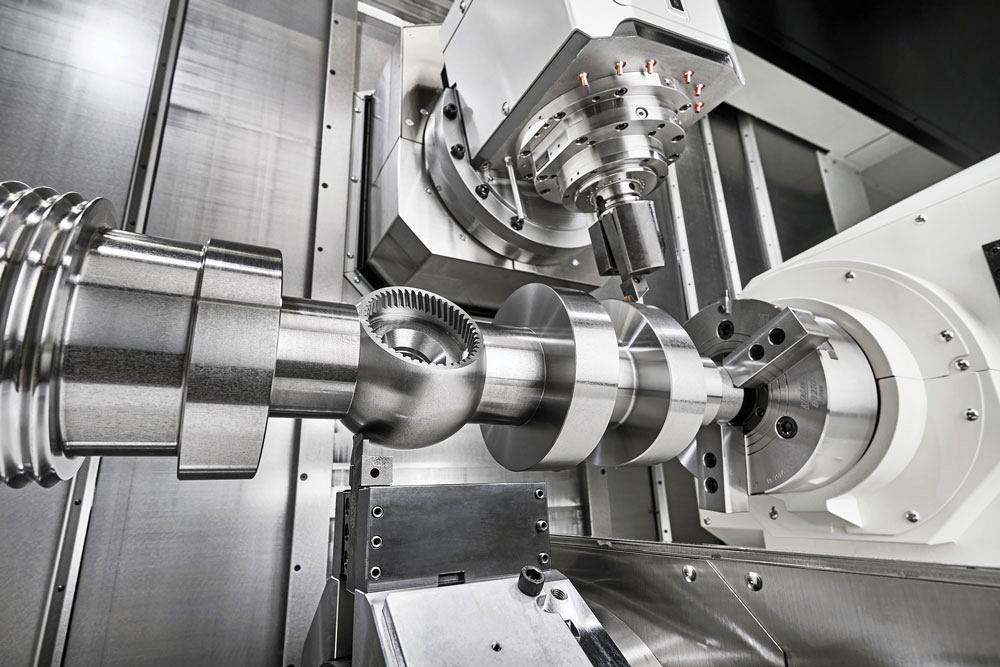
Lower Maintenance And Downtime
One of the major advantages that CNC machining has over traditional machining is lower maintenance and less downtime. This topic will be explored by giving in-detail explanations and real-world examples of how this advantage can be gained.
Predictive Maintenance and Monitoring
CNC machines are equipped with variety of sensors and systems that allow easy and predictive maintenance. Those systems are able to detect potential problems long before they become fatal. Thereby, the maintenance and checking process is made on time, leading to complete prevention of any machine breakdowns. The sensors may monitor, for instance, the load on a spindle, its noise and vibration, and in some more advanced systems even its temperature. Thus, any anomaly in the sensor patterns may give the operator a hint about the needed maintenance and opportunity to avoid any unplanned downtime for the equipment. Real-World Example: Automotive Manufacturing
Automotive production implies absolutely no downtime, as every pause is hundreds or thousands of dollars lost. Ford Motor Company implemented predictive maintenance system for their computer numerical control CNC machines. As a result, the number of unplanned and unexpected stops went down by 20%, meaning that the equipment was in a better shape. By constantly receiving the data, the software solutions were able to warn about the potential problem long before it could create any technical troubles, so Ford’s production was put on hold fewer times. According to some estimates, predictive maintenance allowed Ford to spend 15% less money on replacement and repair of CNC machine parts. Durable and High-Quality Machines
CNC machines are primarily made from high-quality materials with expensive, wear and heat-resistant coating, such as high-tech steel and alloys. Precise engineering ensures their long-lasting durability, so that even under 24/7 seamless work, no parts of the machine will wear out. It also greatly increases the intervals and reliability of performing any maintenance, lowering the possibility of the machinery to fail and stop working.
Case Study: Aerospace Component Manufacturing
The aerospace industry requires highly reliable and efficient manufacturing processes. For example, Lockheed Martin, a major aerospace manufacturer, uses CNC machines to produce critical aircraft components. As a result of investing in high-quality CNC machinery, the company cut the required maintenance efforts by a noticeable margin. The durability and reliability of CNC equipment made it possible for the manufacturer to keep the production rates high and quality ensured. Therefore, several equipment tests proved that timely delivery of aerospace components was ensured by reliable maintenance performance of CNC machines.
Automated Lubrication and Maintenance Routines
CNC machines frequently have automated lubrication systems and maintenance routines to ensure there is no downtime between regular manual interventions. Usually, these systems are responsible for ensuring moving parts are continuously lubricated and the amount of friction and wear they produce is minimal. For instance, the CNC equipment can be routinely programmed to perform a series of lubrication tasks every several hours automatically. The routines also apply to the machine tests and self-checks that ensure the equipment is at its optimal performance at all times.
Real-World Example: Electronics Manufacturing
The electronics manufacturing sector also sees tight production schedules that can be disrupted by equipment malfunction. To produce parts for its devices, Samsung often utilizes CNC machines with automatic maintenance features. The two-way automation of these machines allows them to produce the necessary components constantly. The machines perform the lubrication and routine checks automatically, ensuring the need for manual maintenance is kept to a minimum. As a result, the manufacturer cut its maintenance costs by 10% and reduced their production downtime by 15%, effectively improving the overall productivity. The CNC design emphasizes cost-efficient, easily performed maintenance that also reduces the time needed for scheduled repairs.
Real-World Example:Medical device manufacturing
The production of components characterized by strict quality standards requires extremely reliable manufacturing processes. For example, Medtronic, a prominent worldwide medical technology developer, uses CNC machining to create fine components for its devices. Thanks to the simple maintenance Peculiarities of the CNC equipment, Medtronic recorded a substantial fall in the downtime of the assembly line that was associated with maintenance works. Convenient design solutions used to produce CNC machines made maintenance as simple as possible, minimizing the time it took for implementation and allowing to ensure that the downtime caused by technical reasons will be as low as possible.
Reduced dependency on skilled maintenance labor
Specialized machine tools often require only nonspecific maintenance efforts throughout their lifecycle. Their constant monitoring by means of sensors and automated carrying out of certain maintenance tasks significantly reduces demands of the qualified maintenance personnel. For example, a traditional machine-building factory that implements the use of CNC machines may need only general technical staff to perform regular checkups of the machines and fix minor malfunctions, with specialized technicians only being required to fix the rarer and more complex problems.




